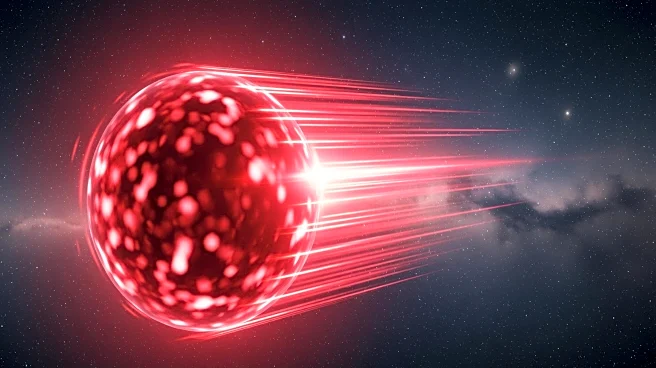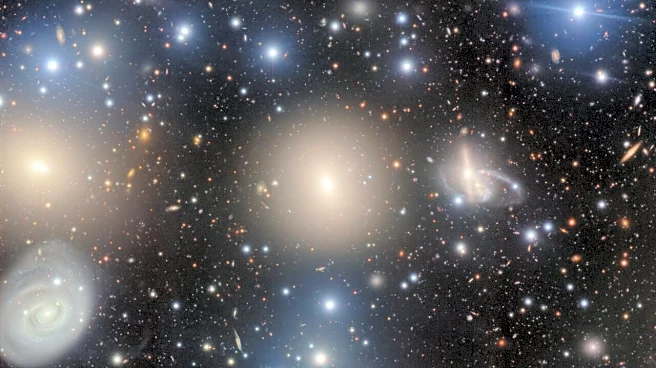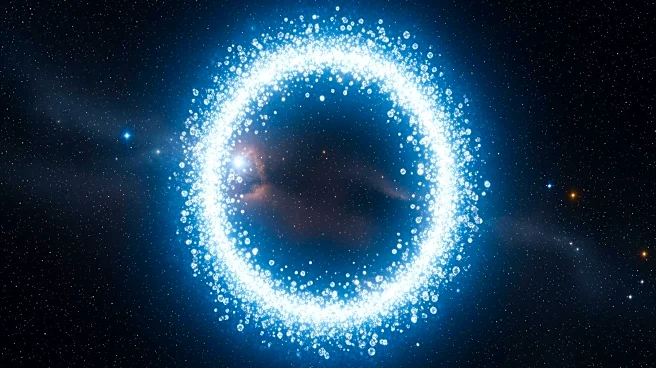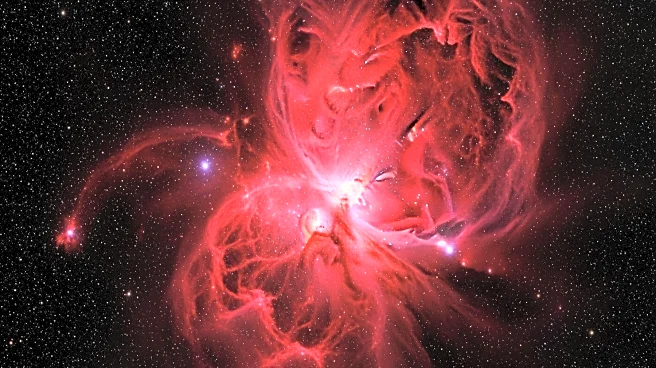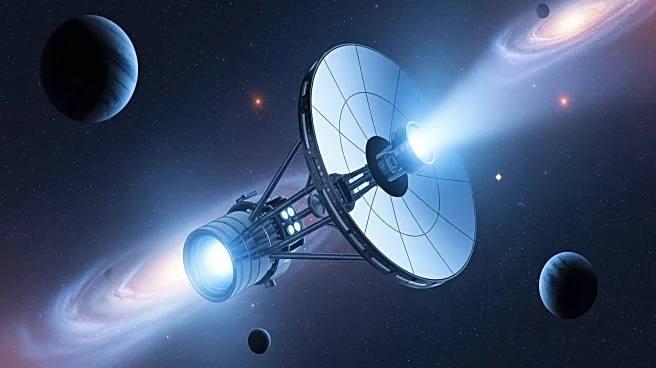What's Happening?
Astronomers have discovered a mysterious red object, CWISE J1249, moving at record speed through the Milky Way. This celestial body, which emits an ultra-cool red glow, challenges existing cosmic theories
due to its high velocity and ambiguous classification. It appears unbound from any nearby star system, suggesting it may have been ejected by a violent cosmic event. Scientists are mapping its trajectory to uncover clues about its origin and nature.
Why It's Important?
The discovery of CWISE J1249 is significant as it challenges current models of galactic physics and object classification. Its high velocity and unique characteristics may lead to a reevaluation of how rogue planets and similar objects are formed and behave. This event underscores the need for updated understanding of gravitational acceleration and cosmic events, potentially impacting theories about the formation and evolution of star systems.
What's Next?
Infrared observatories are tracking CWISE J1249's movement, with spectroscopy planned to reveal its mass and chemical composition. Scientists are using computer simulations to explore formation scenarios for this object. The ongoing study may redefine the understanding of rogue worlds and contribute to the development of new models in galactic physics.
Beyond the Headlines
The discovery of CWISE J1249 highlights the dynamic nature of the universe and the continuous need for scientific exploration. It may lead to advancements in technology used for observing and analyzing celestial objects. The event also emphasizes the importance of international collaboration in the field of astronomy.
